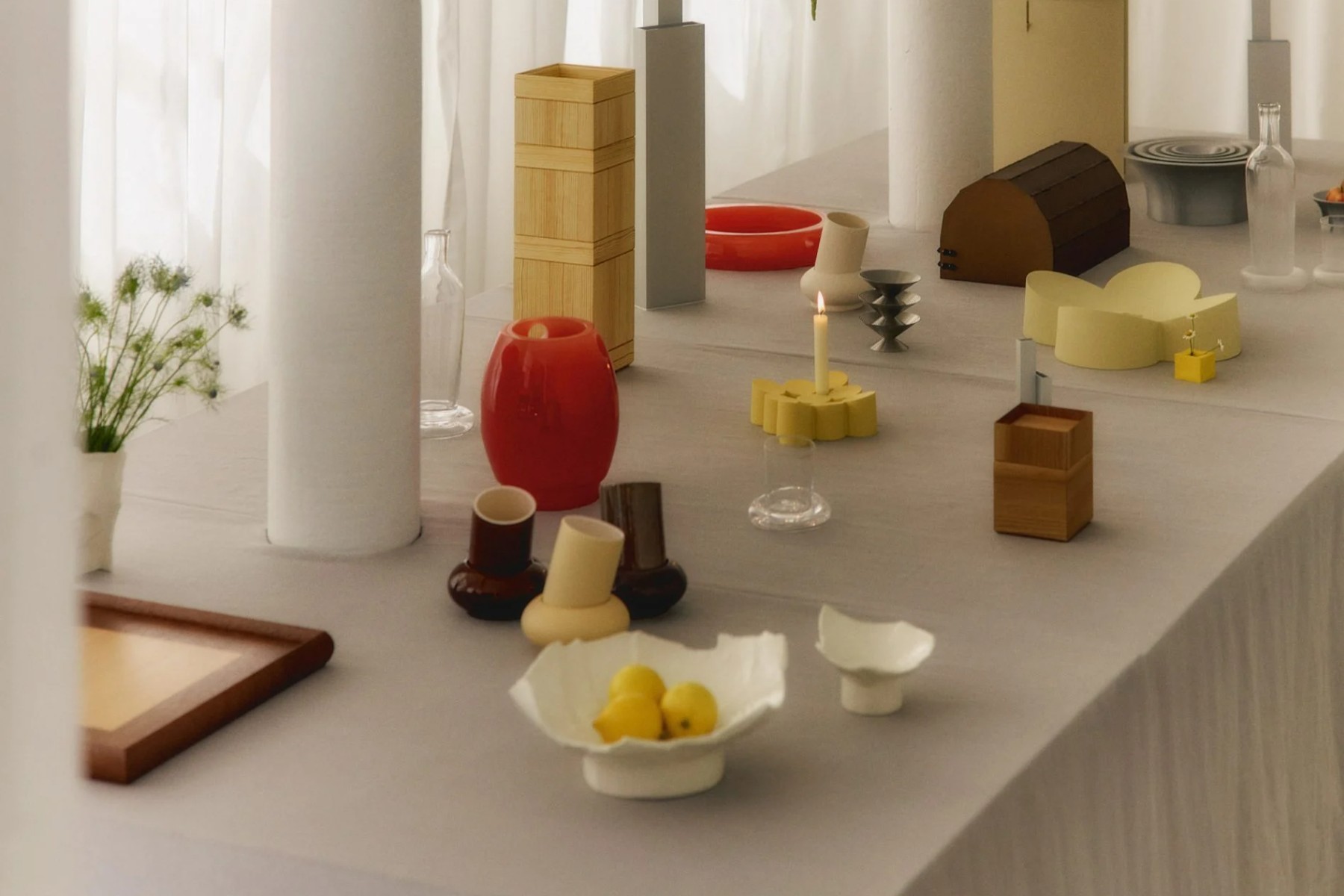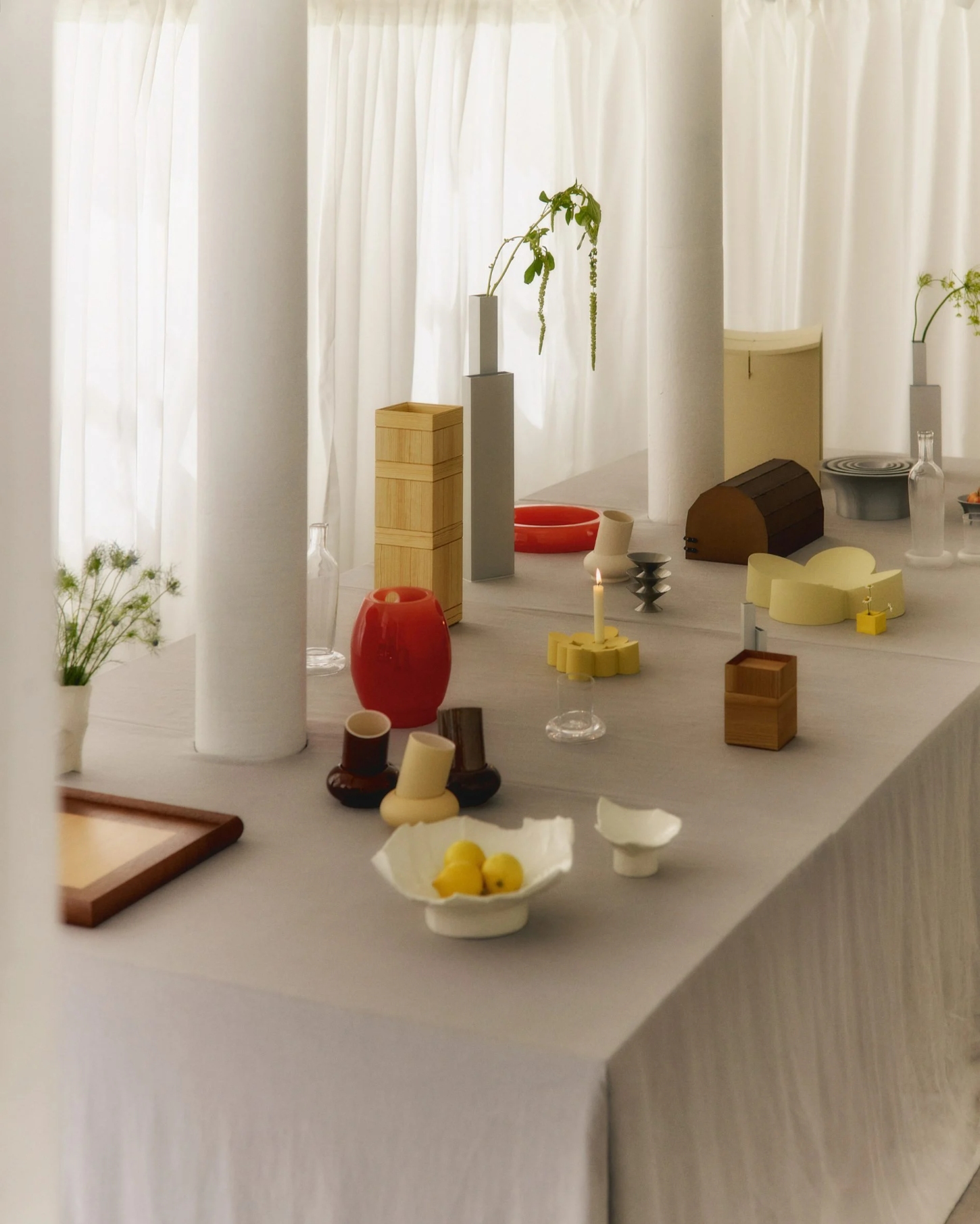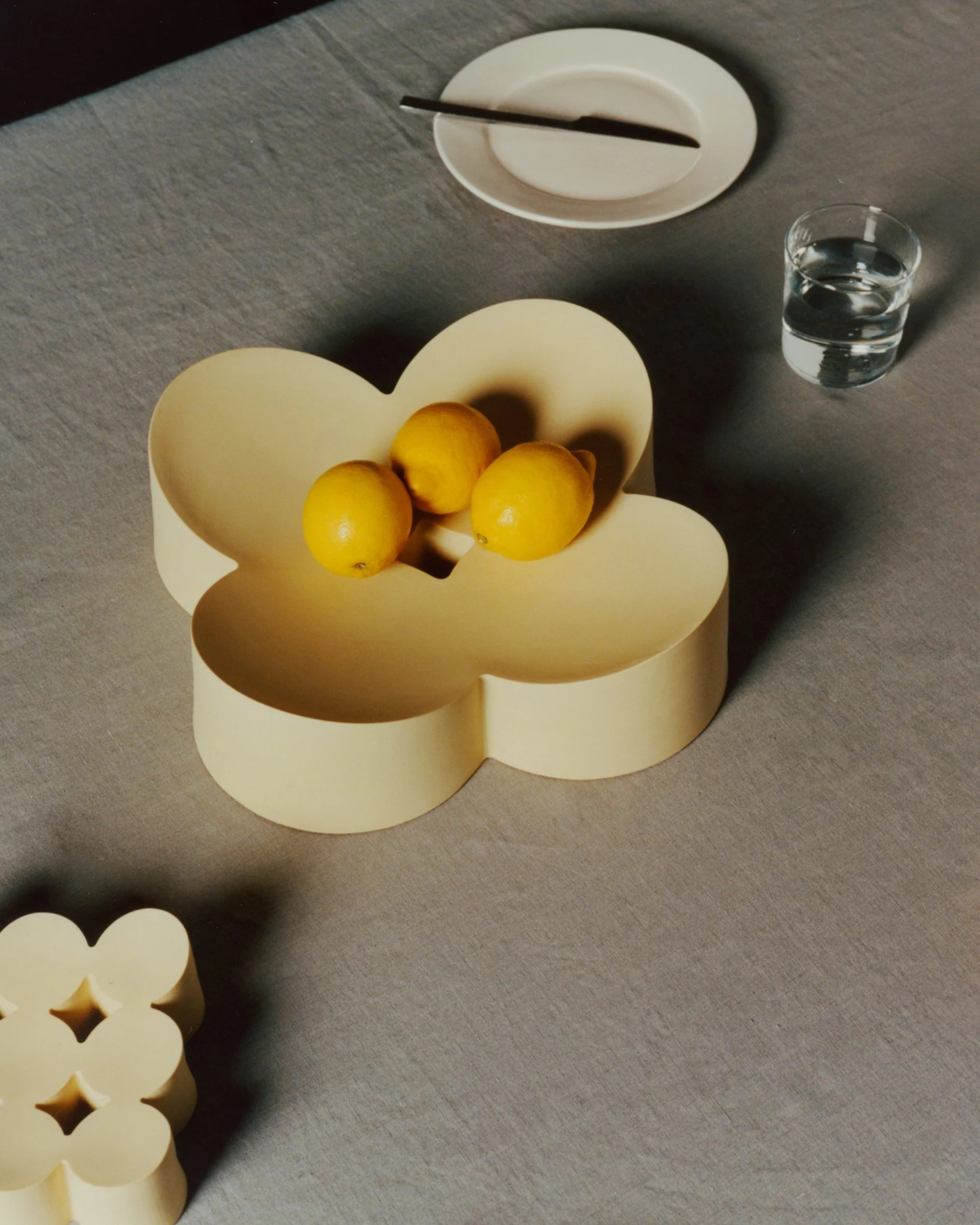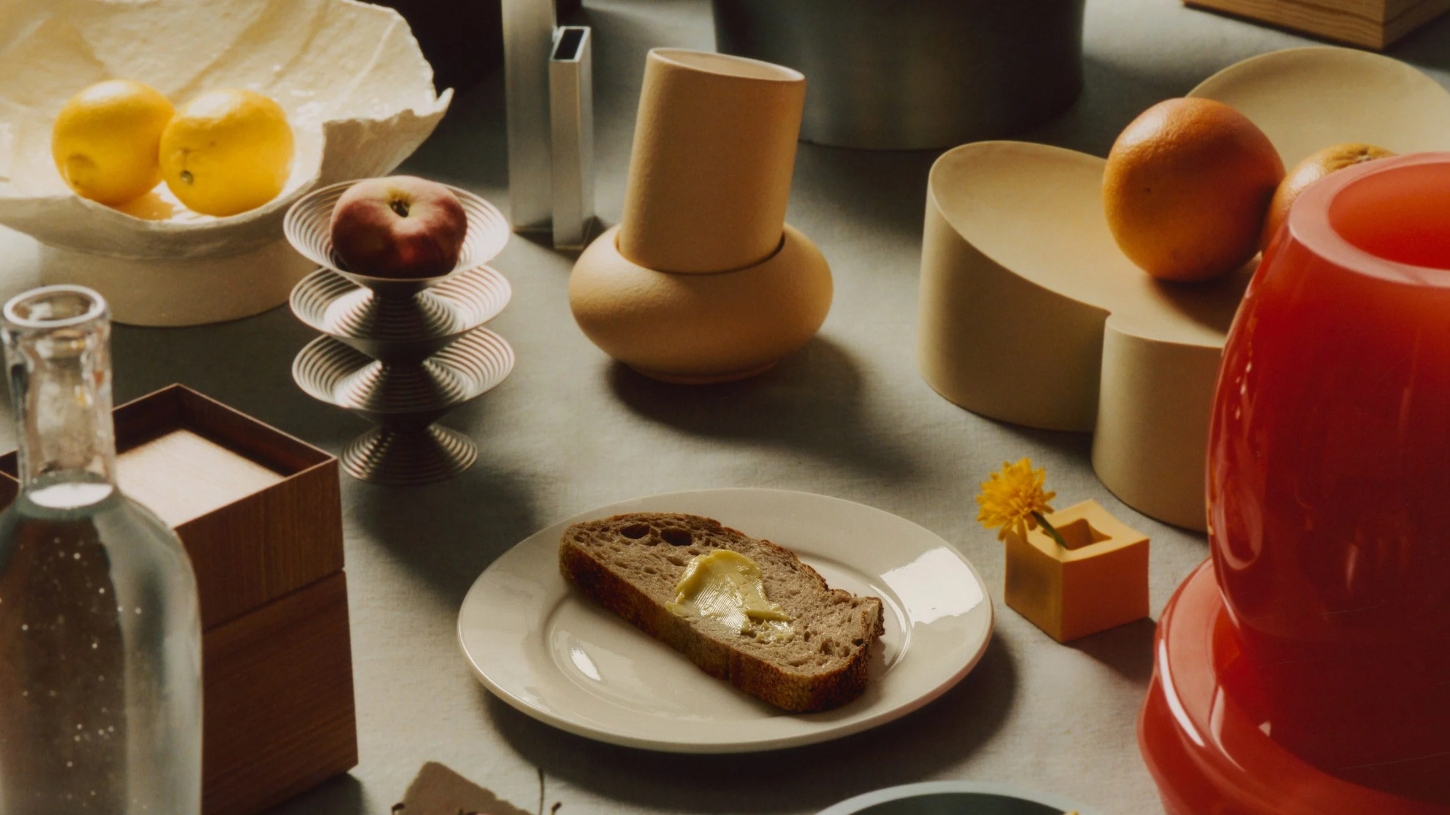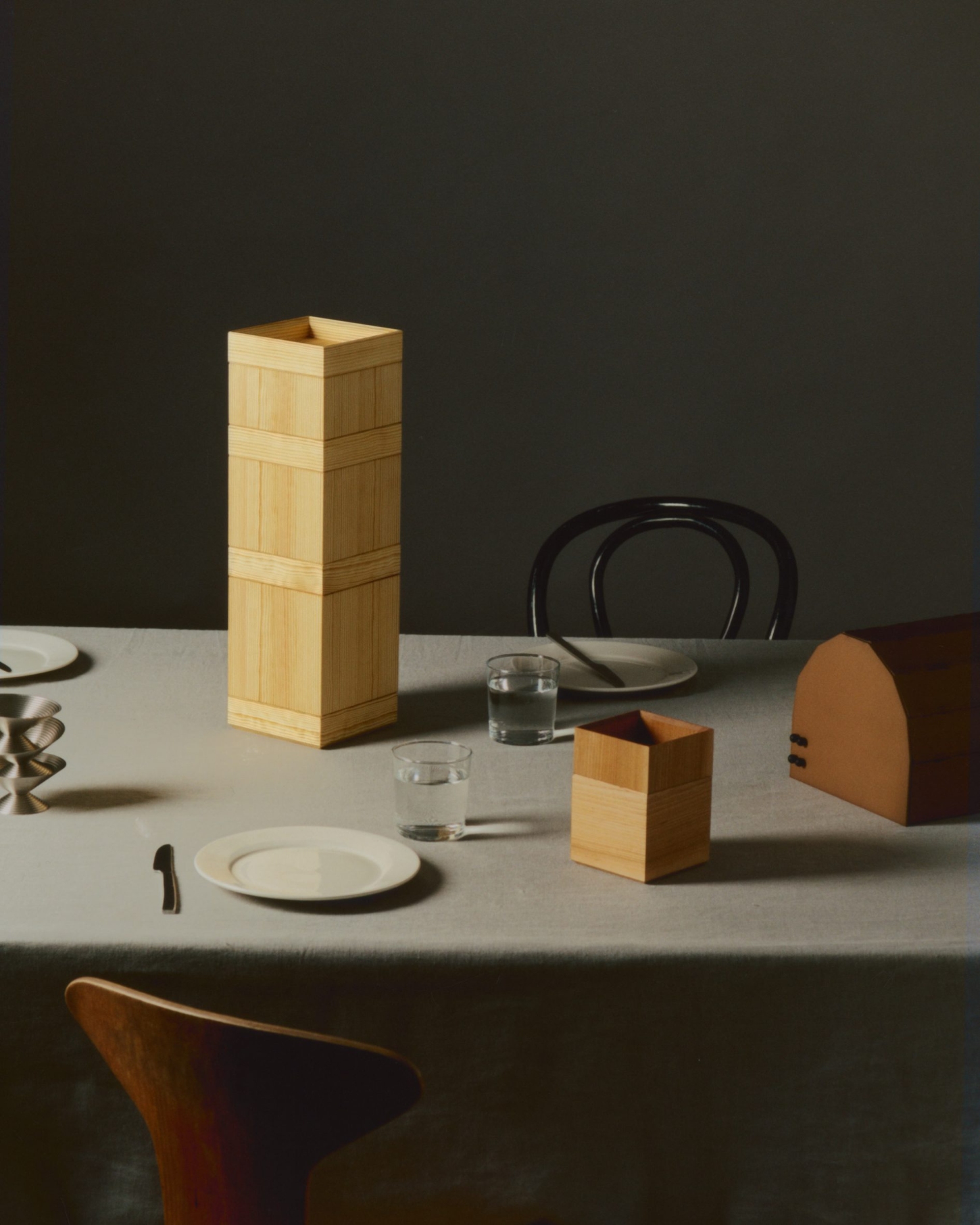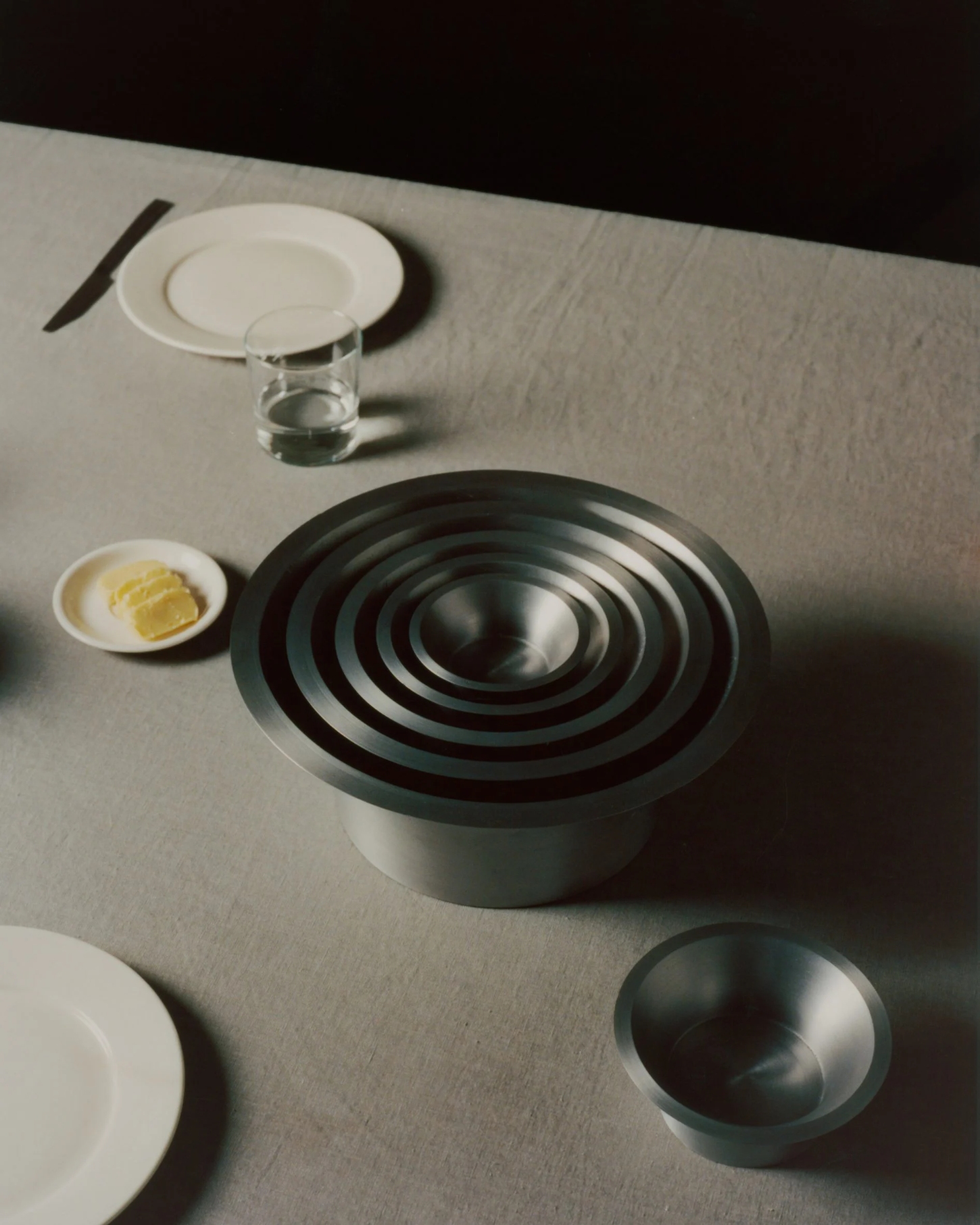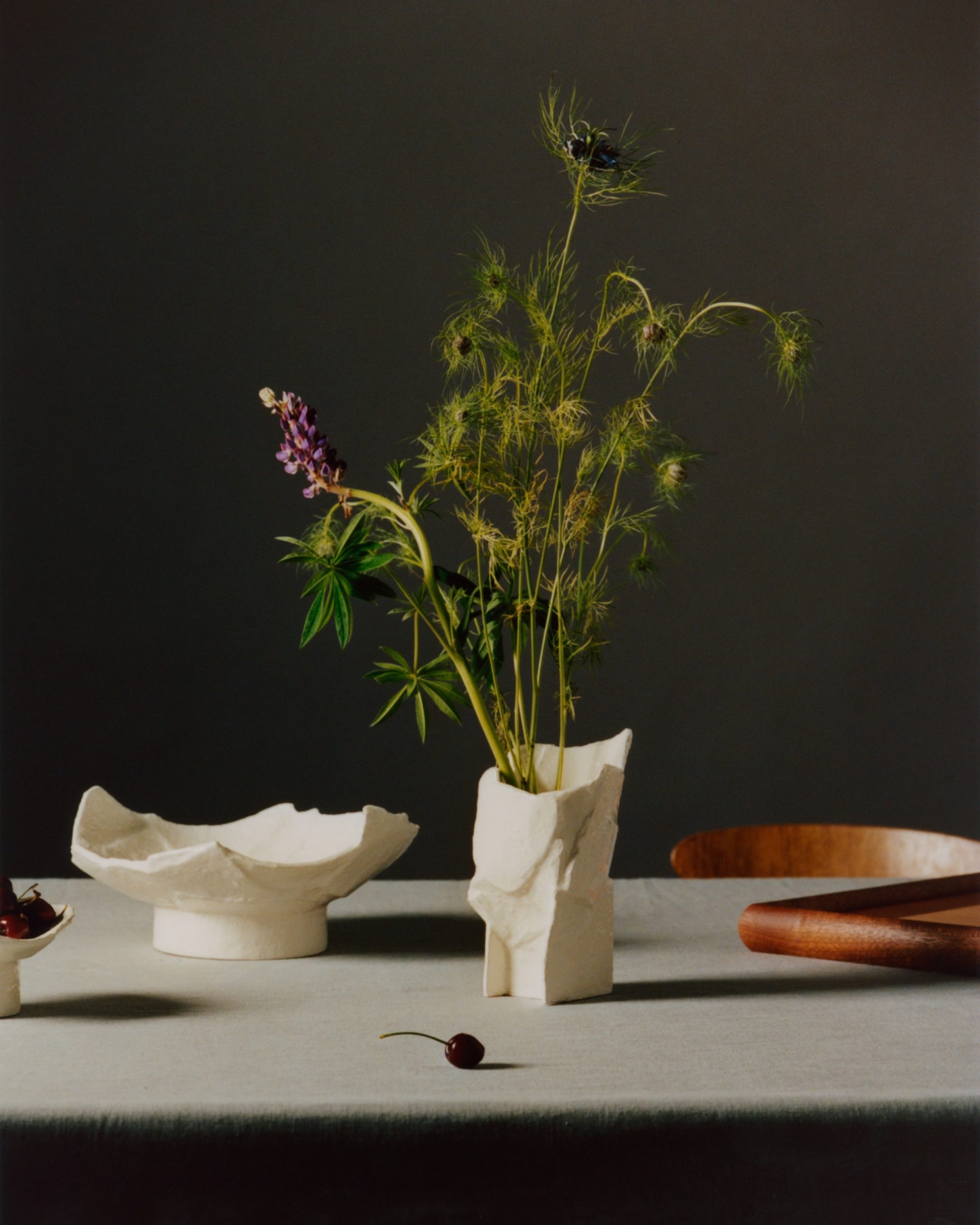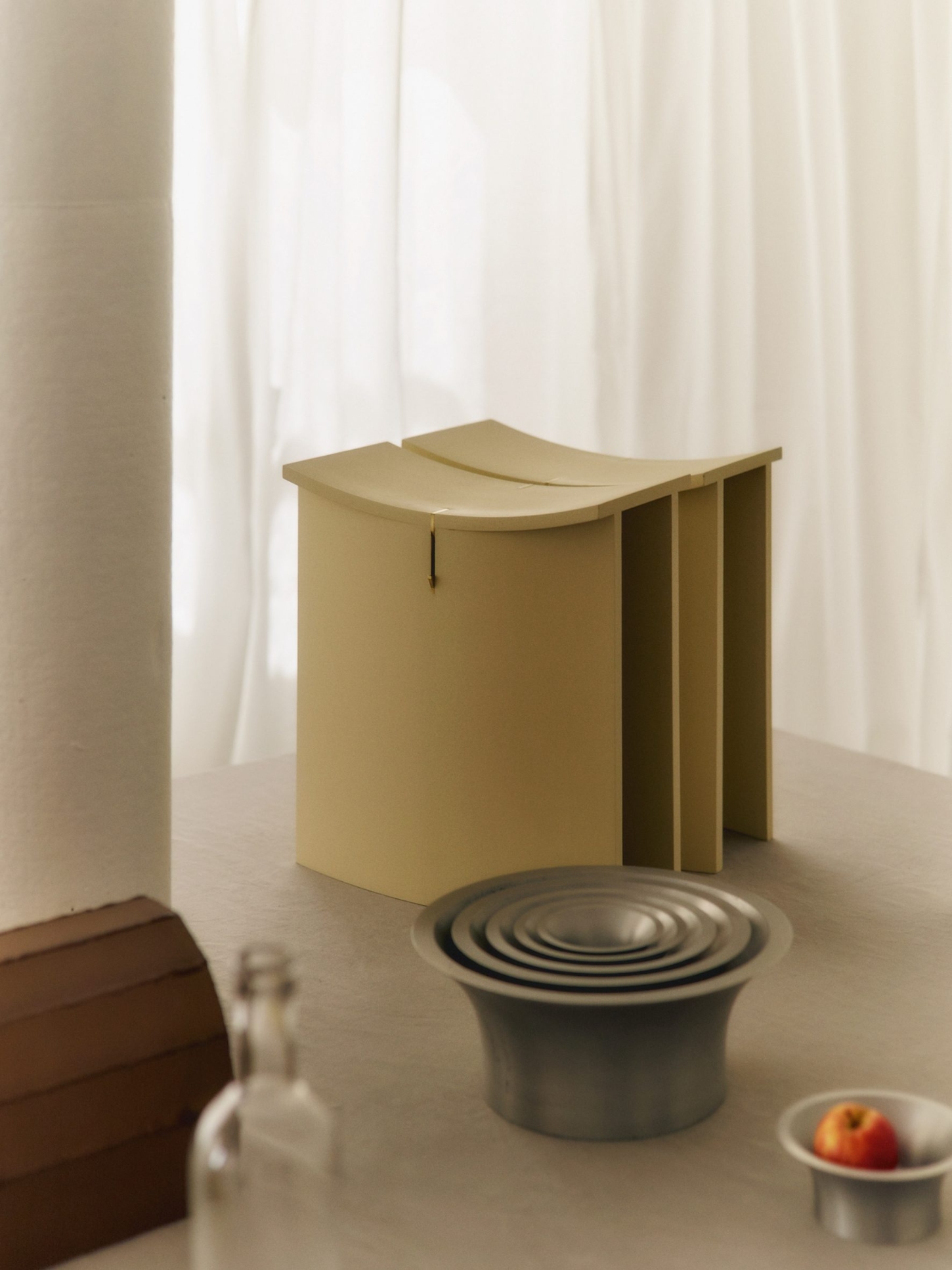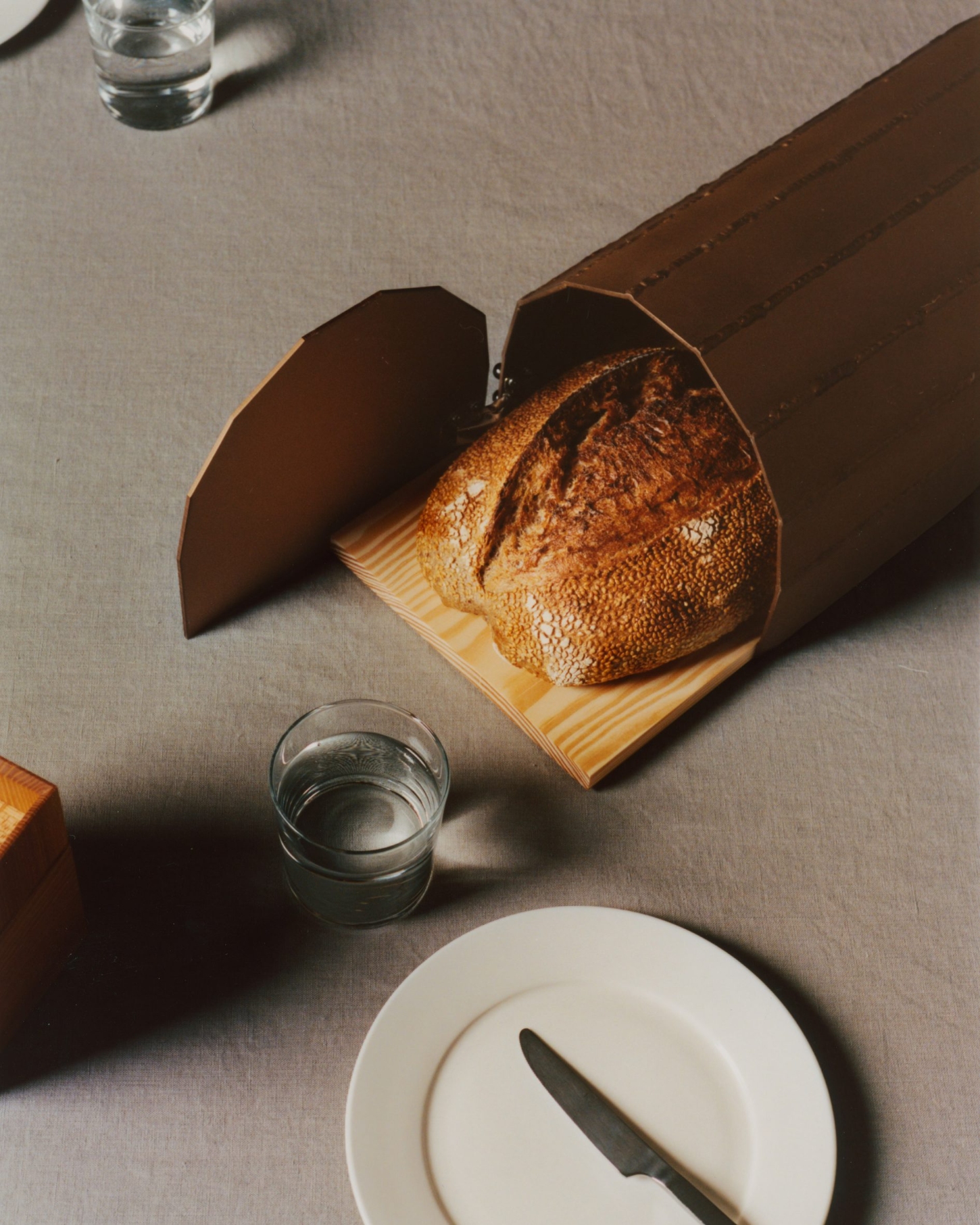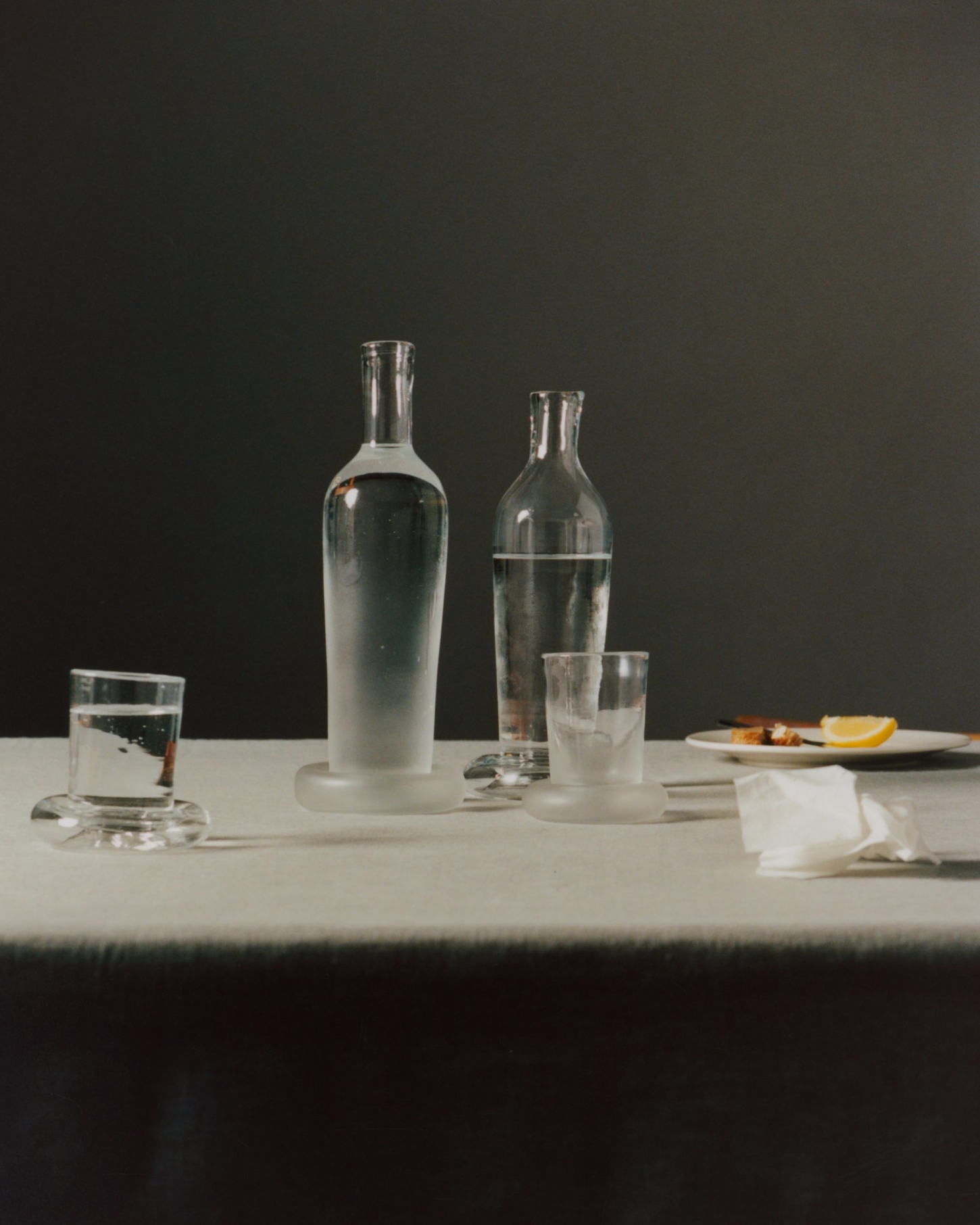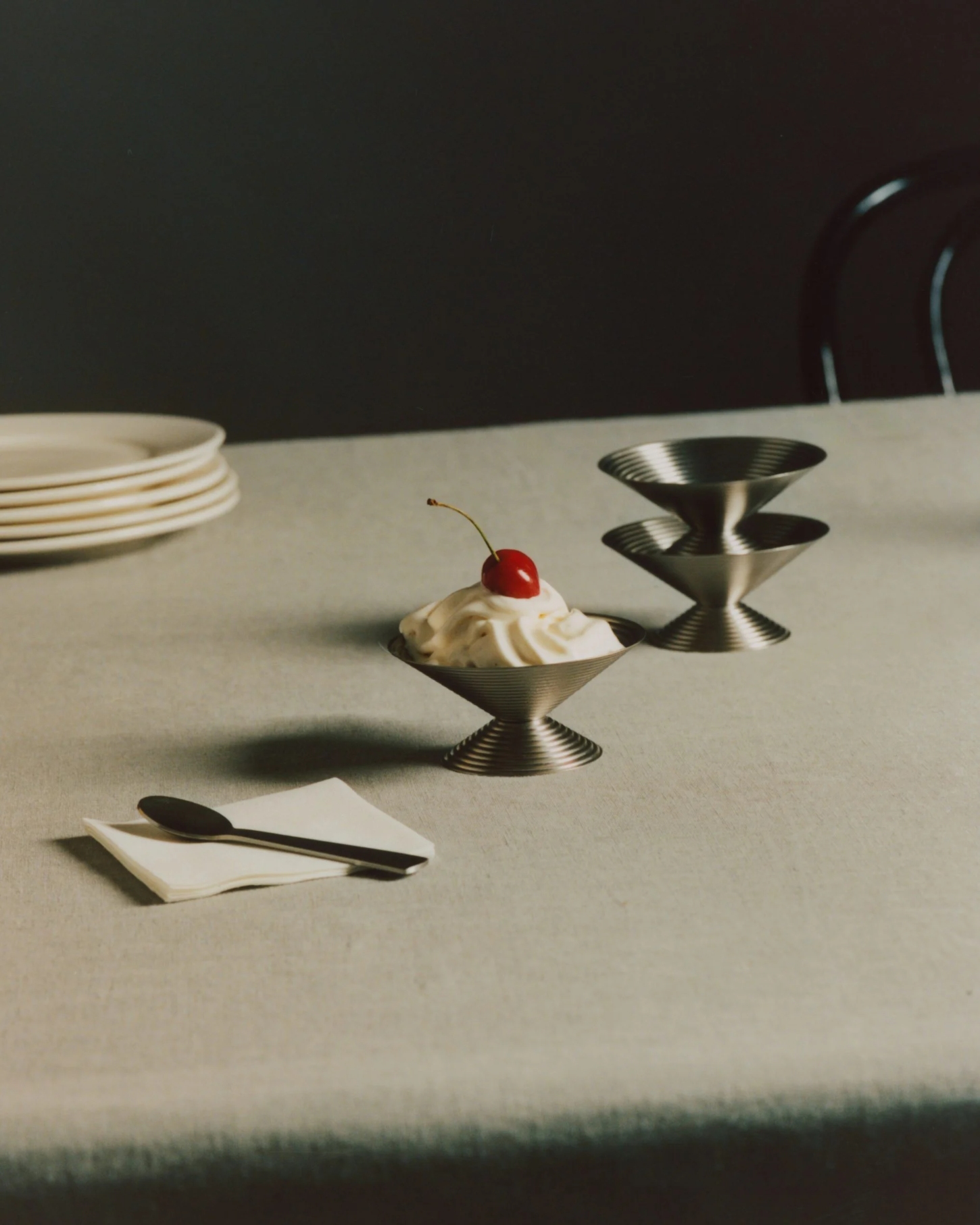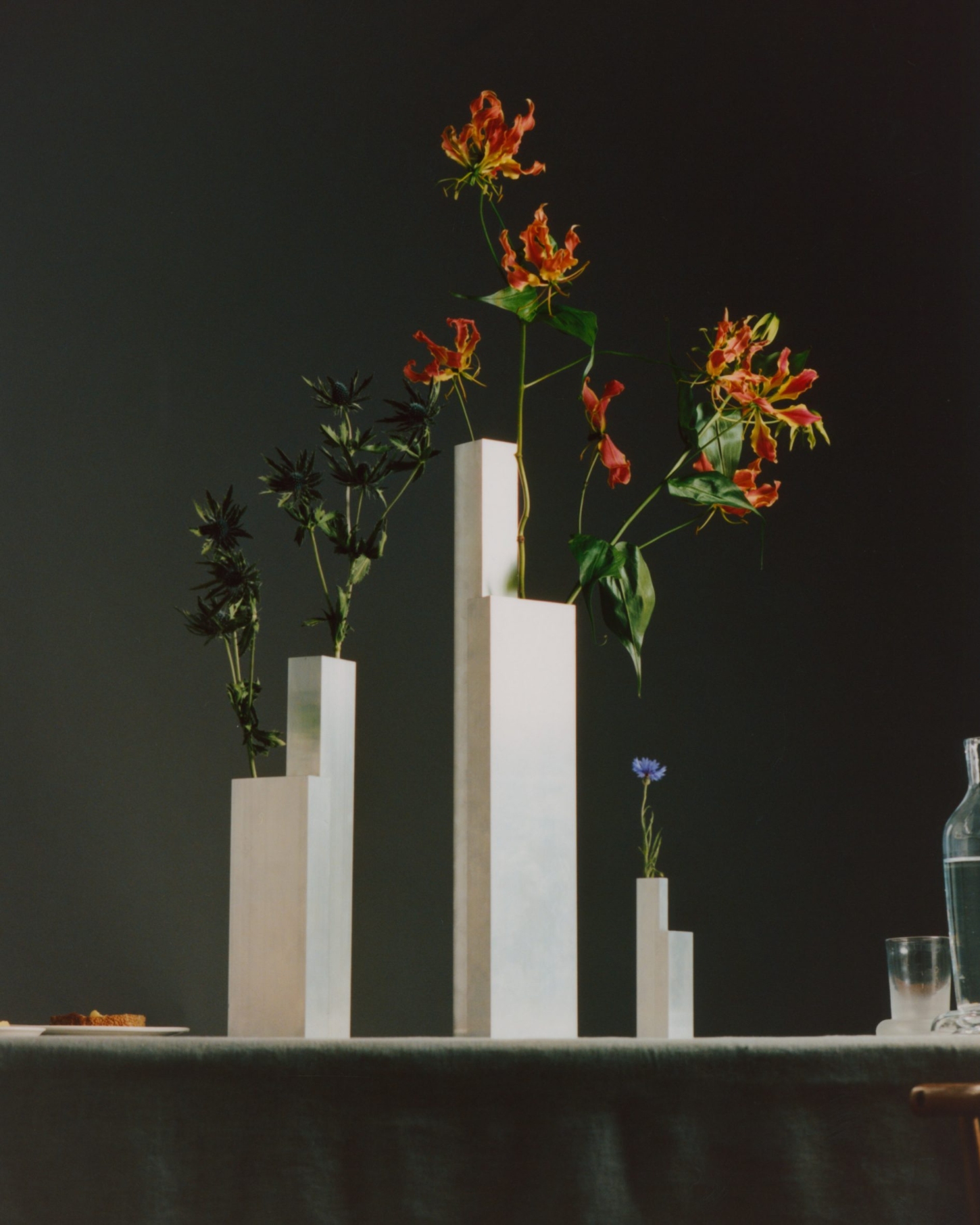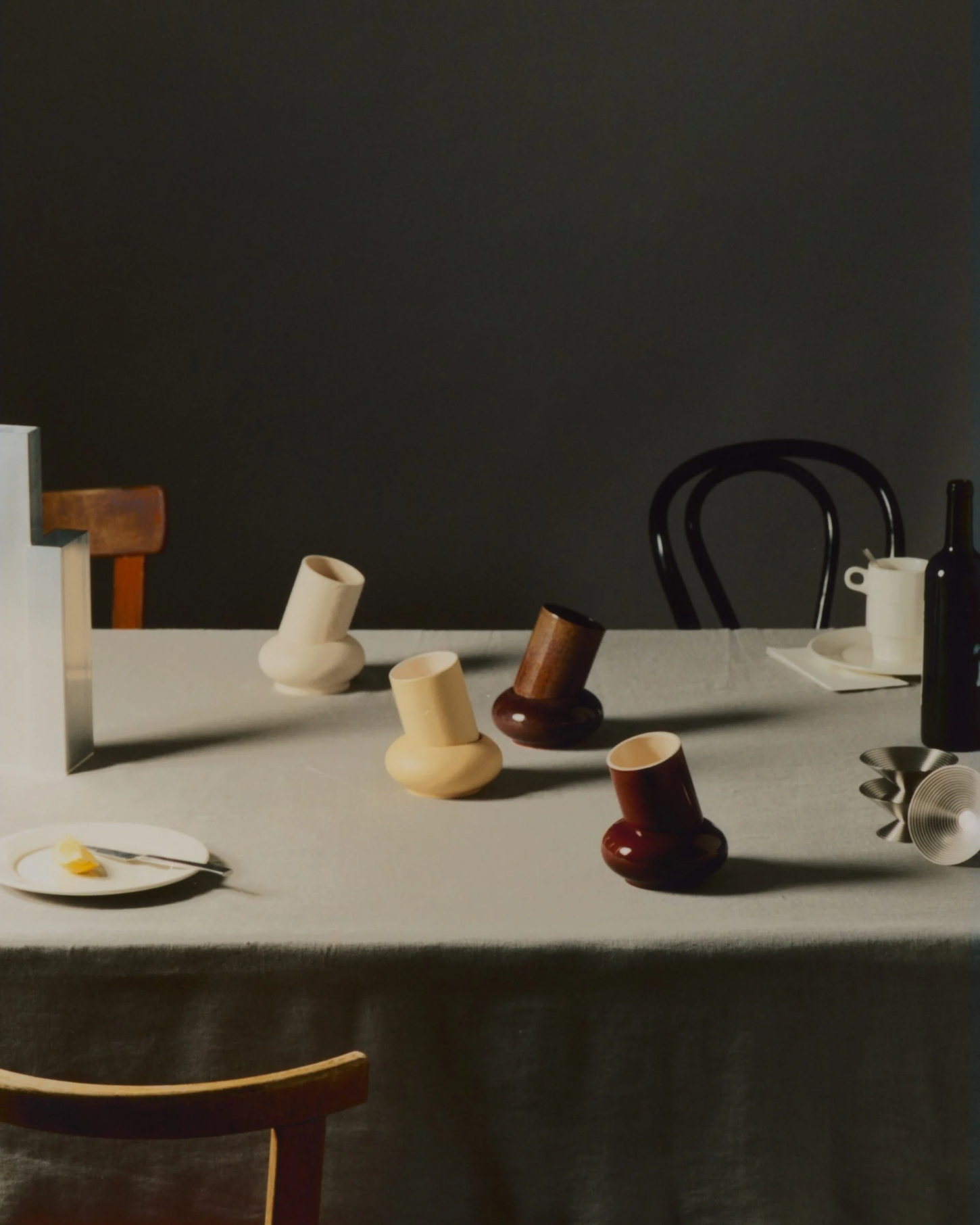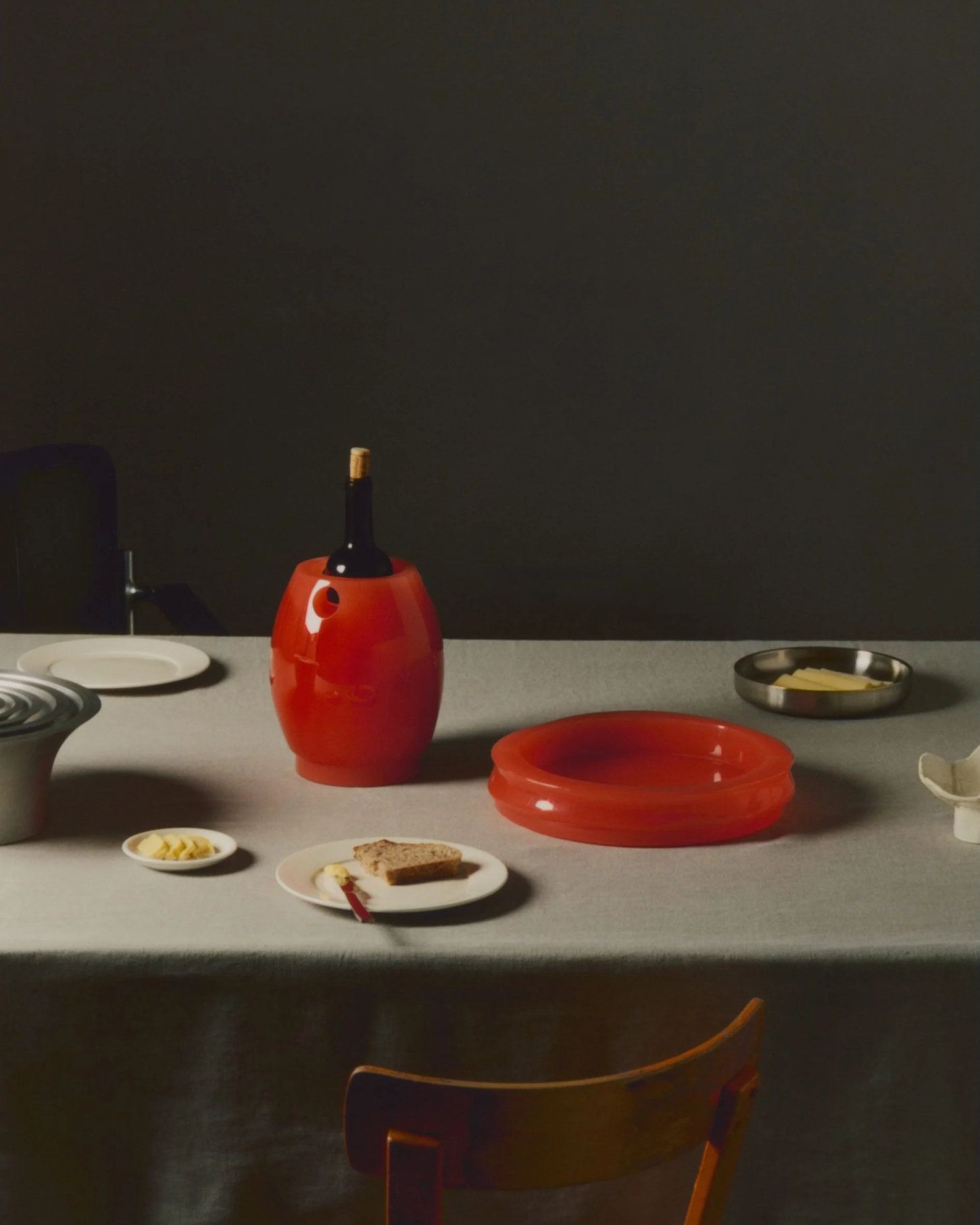The playful energy of the Bread and Butter exhibition made it one of the more quietly resonant surprises of this year’s 3 Days of Design in Copenhagen, a table-sized showcase conceived by Hee Choi of Berlin-based Ae Office and designer Pyeori Jung as an ode to the art of pairing—on the plate and beyond.
Set inside the warmly lit interior of the Korean restaurant Ouri, the exhibition took a refreshingly unassuming approach: a single long table, covered in grey cloth, where design objects were placed without pretense or barrier. The restaurant served small dishes alongside the works, reinforcing the central idea that dining is not only about food, but about harmony—material, sensory, and social.
The title Bread and Butter came not from a specific dish, but from the notion of the perfect match. That familiar phrase became the curatorial frame for twelve emerging designers, invited from Denmark, South Korea, Sweden, and the Netherlands. The brief was loose but pointed: design a pairing for the dining table, and stay within the colour range of bread and butter—stretching from palest cream to the deep, toasted end of the spectrum.
What arrived was a study in contrasts, materials, and moods. Forever Studio of the Netherlands brought a wineholder in rich raspberry-red glass, accompanied by a matching tray. EO Studio, splitting time between Seoul and Rotterdam, offered a thoughtful take on the classic bread bin and board. Modular stools came from South Korea’s Kim Ki Hyun, while Choi’s own Ae Office contributed a trio of pale yellow pieces—a fruit bowl, a candleholder, and a vase—each one soft and quietly cheerful in tone.
Some pairings were more than complementary—they were co-dependent. Hun Lee’s clever balancing cups, for example, can only stand with the help of their saucers, turning the idea of support into a literal design function. Elsewhere, Danish designer Maria Bruun presented a mouth-blown glass carafe and cup set, elegantly resting on an oversized coaster like a sculpture mid-conversation. Anna Søgaard designed stackable boxes for food sharing, while Laura Bilde’s polished steel bowls gave ice cream an industrial shine. Laerke Ryom’s Ripple bowls, made from cast aluminium, nested neatly inside one another, and Krøyer Sætter Lassen’s Darwin Vase in extruded aluminium provided structural poise to whatever floral arrangement it might carry.
Kunsik introduced Void Trays in warm mahogany and beech, designed as mirrored reflections of one another. Munich-based studio Thought Progress pushed into more experimental territory with vessels made from chipboard, soaked paper, and food-safe resin—an unexpectedly earthy counterpoint to the glass and metal around them.
Copenhagen, for the curators, was chosen less as a destination and more as a question. It wasn’t yet overrun, nor fully defined—a space open to interpretation. That spirit of discovery extended to the show itself, which resisted spectacle in favour of intimacy and ease. As for what comes next, the curators imagine Bread and Butter travelling—to Seoul, perhaps, or into a bookstore, a hair salon, or a library. What matters isn’t the venue, but the mood: a gentle unfolding of ideas, quietly paired, thoughtfully served.

